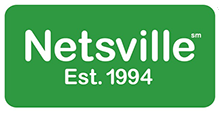Whether you are just starting on your search engine optimization (SEO) journey or have been at it for years, there’s a good chance some part of your site can be improved. In fact, from the hundreds of small business websites we look at every year at Bowler Hat (my agency), it is rare we see a site implementing SEO perfectly and completely.
Search engine optimization is not rocket science for any site, small and local businesses included. Yet, it is easy to get lost in trivial details before the essential, basic steps are put in place. This means for most businesses, there are easy wins on the table.
In SEO, as with many business endeavors, the Pareto Principle rings true:
…” for many events, roughly 80% of the effects come from 20% of the causes.”
This is definitely accurate when we look at SEO for smaller businesses. Getting 20 percent of the work done to get 80 percent of the benefits is key to getting an early return from your SEO efforts. Let’s look at the basics and how to use that 20 percent to score easy wins you can put in place today.
Technical SEO
Technical SEO can get, well, technical. Yet, don’t let the term scare you. If you make smart decisions at the outset, then much of the technical work is taken care of by your website hosting and website software.
Selecting a search-engine-friendly content management system (CMS) like WordPress will ensure you have a technically sound base for your SEO efforts. With the right kind of CMS in place, you will then want to ensure you host the site in an optimized environment.
In some recent testing we conducted, we compared a basic WordPress site on a standard web hosting to an optimized environment. The optimized environment did much of the technical optimization required to speed up WordPress. The physical file size was reduced by two thirds and loading time was reduced to one second from three.
All of this was done by making smart decisions rather than doing lots of work and performing manual optimization.
Or, 20 percent effort, 80 percent results.
The primary takeaway here is to make informed choices regarding your website content management system and hosting environment. Get this right, and the complexity melts away.
Keyword research
Understanding the language of your customers is the foundation that good search engine optimization is built on. This is key not only to improve your rank in the organic search results but also to help convince users to click on your site and then get in touch when they arrive.
The following is a straightforward way to get a keyword list together. I would generally use a spreadsheet for this so we can consider search volume, difficulty and existing rank, which helps us optimize pages.
1. Seed List. Start by listing all the important elements of your business. Typically, for small businesses, this is products and services along with any locations if you are optimizing for multiple locations. Organize your seed keywords in a spreadsheet.
2. Keyword research tools. There is no shortage of keyword research tools out there. They can help you understand the search volume and the potential value of keywords. A good starting place would be the following free tools:
- Google Ads keywords tool. Get volume by location and an idea of difficulty plus cost per click (CPC ) for ads. Keywords that perform will typically have a higher CPC and competition.
- Keywords Everywhere. This is a browser extension for Chrome that shows the search volume by country and a range of keyword suggestions. It’s a cool tool to keep keyword research on your mind as you browse the web.
- Google. I am a big fan of browsing the web for your keywords. Google will make keyword suggestions at the bottom of the page and we can also get a handle on what our competitors are optimizing around. Understanding searcher intent is key to ensuring you optimize around the needs of your prospective customers so don’t skip this step.
There are a number of paid tools including Moz, Ahrefs and SEMrush; they are all powerful tools but are not free. If you are a cash-strapped small business, take advantage of their free trials before signing up.
Your goal is to find logical groups of keywords that relate to one page or service. You will also want additional values like search volume, competition and rank by keyword so you can make the best possible optimization choices.
Let’s use a plumber that works in one location in the town of Birmingham as an example:
- Services.
- Plumber.
- Emergency plumber.
- Boiler repair.
- Locations.
- Birmingham.
We may expand on these keywords and group them logically as follows:
- Plumber. Plumbing. Plumbing services.
- Emergency plumber. Emergency plumbing. Emergency plumber 24/7. 24-hour plumber.
- Boiler repair. Boiler service.
What we end up with here is an expanded list of keywords that covers the variety of ways in which someone may search. Ensuring you use all of these variations in your sales copy and on-page optimization ensures Google has confidence that you can help this user. And this helps you rank more highly and generate business inquiries.
Site structure
Another way in which we can help Google and users understand your site and business is to ensure the content is well structured. In my background as a web developer, we used the example of a filing cabinet to illustrate site structure.
Read more at Search Engine Land
Based in Rochester, New York, Netsville is an Internet Property Management company specializing in managing the Digital Marketing, Technical, and Business Solutions for our customers since 1994. For more information, please click here.




